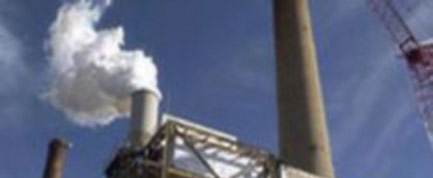The making of cement accounts for up to 10 percent of the world's total emissions of carbon dioxide, a key gas involved in global warming. Now scientists and engineers are developing a cleaner way to manufacture cement.
>
Most of the carbon dioxide emissions in cement manufacturing result from heating the kiln to a temperature high enough to transfer energy into the powder. Civil engineer Franz-Josef Ulm at MIT and his colleagues are now developing materials that are hopefully as strong and cheap as cement while requiring lower temperatures during production.
In the end, the researchers suggest this cool solution can slash carbon dioxide emissions during cement manufacture by up to 10 percent. This would accomplish a fifth of the goal of the Kyoto Protocol,
>
The researchers suggest they could swap out C-S-H (calcium-silicate-hydrate) with a material that stacks up just as well but requires less heat to produce, thus cutting down on carbon dioxide emissions. For instance, Ulm said candidates include compounds resembling C-S-H that replace calcium with magnesium.
"Magnesium is an earth metal, like calcium, but it is a waste material that people must pay to dispose of," he explained.
Ulm and his colleagues report their findings in the January issue of the Journal of the Mechanics and Physics of Solids.
>
Most of the carbon dioxide emissions in cement manufacturing result from heating the kiln to a temperature high enough to transfer energy into the powder. Civil engineer Franz-Josef Ulm at MIT and his colleagues are now developing materials that are hopefully as strong and cheap as cement while requiring lower temperatures during production.
In the end, the researchers suggest this cool solution can slash carbon dioxide emissions during cement manufacture by up to 10 percent. This would accomplish a fifth of the goal of the Kyoto Protocol,
>
The researchers suggest they could swap out C-S-H (calcium-silicate-hydrate) with a material that stacks up just as well but requires less heat to produce, thus cutting down on carbon dioxide emissions. For instance, Ulm said candidates include compounds resembling C-S-H that replace calcium with magnesium.
"Magnesium is an earth metal, like calcium, but it is a waste material that people must pay to dispose of," he explained.
Ulm and his colleagues report their findings in the January issue of the Journal of the Mechanics and Physics of Solids.


Comment